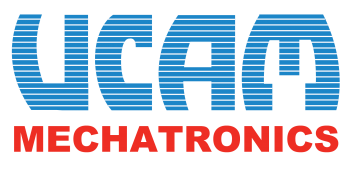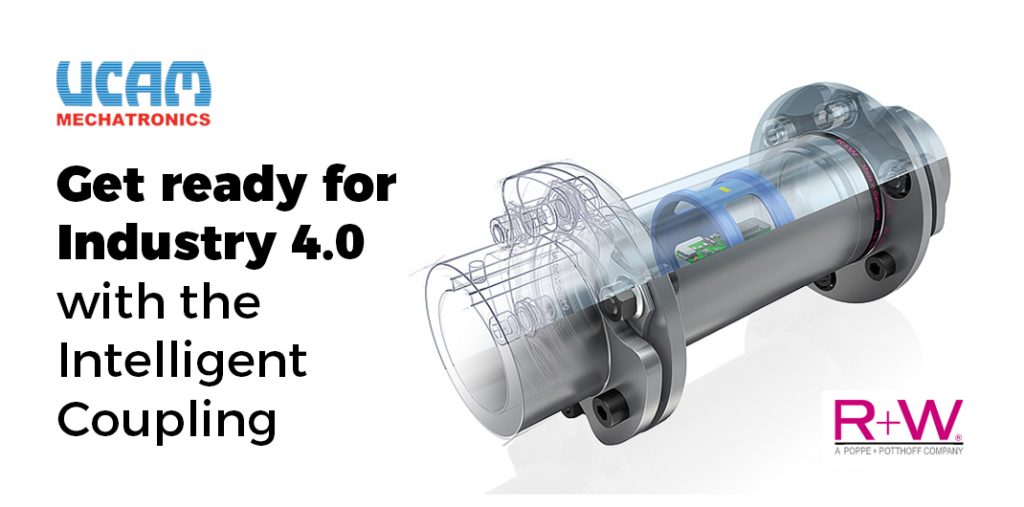Get ready for Industry 4.0 – with the Intelligent Coupling
R+W Antriebselemente is bringing a revolutionary data measuring unit to the market in the form of the Intelligent Coupling, which allows users to see relevant data from their machine at all times. Highly accurate measurement data is recorded directly from the drive train and wirelessly transmitted in near real time to a user-friendly application. This coupling can shorten throughput times, reduce production costs, and increase product quality.
In the drive technology field, it can be extremely challenging to record accurate torque, speed, vibration, and axial force data. The problem is that a rotating drive train makes it difficult to record measurement data, because either direct networking via a cable is not possible or the required installation space is lacking. This is exactly where the R+W Intelligent Coupling comes in: The integrated sensor technology works wirelessly. It collects measurement data directly in the drive train and transmits it to smartphones, tablets, computers, or directly to the customer’s programmable logic controller (PLC) in near real time.
“The Intelligent Coupling is a smart alternative to the torque sensor”, explains Sascha Markert, Head of Development at R+W Antriebselemente GmbH. “The operator always has all the dynamic parameters and relevant data for uninterrupted system availability at a glance on their mobile phone or tablet”, Markert continues. The standard disc-pack coupling has been upgraded to include integrated sensors, which promises high-accuracy data measurement technology at a reasonable price.
Coupling with integrated measuring electronics
Just like the standard mechanical coupling series, the Intelligent Coupling can be easily and flexibly integrated into the drive train. One further advantage is the small amount of space that the coupling requires, since no elaborate auxiliary assembly is required for installation. The 2000 mAh integrated battery allows installation in very cramped spaces or mobile application areas. Alternatively, if constant data measurement is necessary, it will soon be possible install the Intelligent Coupling with an inductive power supply. This stationary version uses a small box connected to the power supply system, which is mounted contactless several millimetres below the coupling. Near field induction will provide the required power through a set of integrated coils.
The intelligent sensors allow data measurement without having to install an external amplifier. The sensors measure torque, speed, vibration, as well as tensile and compressive forces at a sampling rate of 500 Hz. This data is processed directly in the internal electronics while being simultaneously transmitted to a wirelessly connected system.
Application-specific data transmission
Measurement data can be sent to a connected device via a low-energy Bluetooth connection in near real-time. The operator can choose between a high transmission rate or a transmission with particularly low power consumption. The Intelligent Coupling carries out many calculations in the internal measuring electronics before transmission. This ensures a high sampling frequency even at a low transmission rate, as sending only the calculated average values as well as min and max values saves energy and bandwidth without reducing the measuring accuracy. The high-performance streaming mode has a transmission rate of 500 Hz with a battery life of two to three days. In broadcasting mode, data is transmitted at 20 Hz, which increases the battery life to seven days of continuous use.
The different connection methods offer options to select the best possible representation of the sensor data depending on the application. Moreover, it is also possible to define ‘events’: these are recorded to the coupling’s memory when a defined threshold value is reached. This could be a manually selected torque value, for example. If one of these events is configured, the torque values before and after the event are also subsequently recorded following the occurrence. This is possible because the values are continuously written to memory, which means that the values before the actual event are also logged.
User-friendly display with the R+W app
All measured variables can be displayed on a mobile device with R+W’s proprietary app, where they are prepared and clearly presented in various views. Sascha Markert explains the user-friendly interface: “The complex measurement technology and its algorithms below the surface are not visible to the user. Intuitive gesture control makes it easy and comfortable to use.” In the app, the dashboard view displays the data in tables with average, minimum and maximum values. Various scalable diagrams track the detailed course of the measured data. For example, the multi-graph view allows one measured variable to be displayed on top of another to easily identify possible correlations.
An FFT algorithm was also implemented for frequency analysis; this makes it possible to break down the torques, forces, and vibrations measured by the coupling from a discrete-time signal into its frequency components. Thanks to this feature, amplitudes and frequencies can be clearly presented and analysed. The visualisation of load spectra from the area of fatigue engineering is already being planned. This will involve selecting a period of measured data in the app, whereby the frequency of application-damaging torque amplitudes will be evaluated and displayed. R+W aims to provide customers with established evaluation tools in the app to help them optimize their applications in a targeted manner. The app can also present measurement data from several intelligent couplings simultaneously and displays them clearly in a diagram. The data can be saved as a CSV file and imported into Excel for further analysis.
Condition monitoring by connecting to existing systems with universal interfaces
While developing the Intelligent Coupling, retrofitting capability and backwards compatibility with existing systems were key criteria for R+W. In addition to the app, the Intelligent Coupling can also be connected to the R+W Gateway. This Gateway has a USB UART interface as well as four digital and eight analogue outputs. A USB cable can be used to establish a direct connection to a computer. The measured values can be displayed on a PC using third-party software programs such as Serial Port Plotter, MATLAB, or LabVIEW. A PLC connection can be implemented via the analogue and digital interfaces, whereby the latter serves as an output monitor for events such as overload detection.
This universal connection ensures compatibility with common industrial standards for programmable logic controllers. In addition to the established systems, new market solutions such as IO-Link, UMATI, or cloud solutions can also be implemented. Data security also played a key role during the development of the software: “Some customers don’t want external components in their company network”, explains Sascha Markert. “The R+W app, as well as the R+W Gateway in connection with an external computer or other cloud solutions, allows the comparison with existing data to be performed outside the company network.”
R+W is already planning the next step, which is to equip the Intelligent Coupling with miniaturised energy converters. This technology, known as energy harvesting, ensures an autonomous energy supply for the Intelligent Coupling by converting existing and unused mechanical energy into electrical energy.


